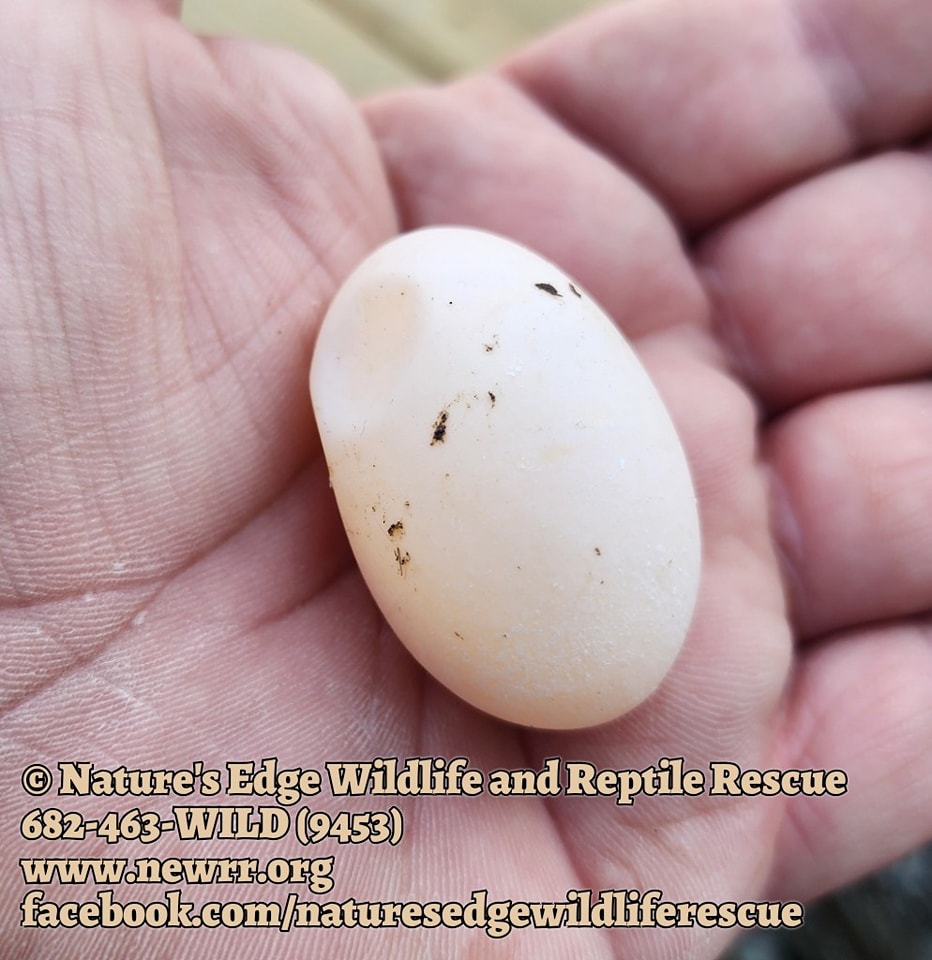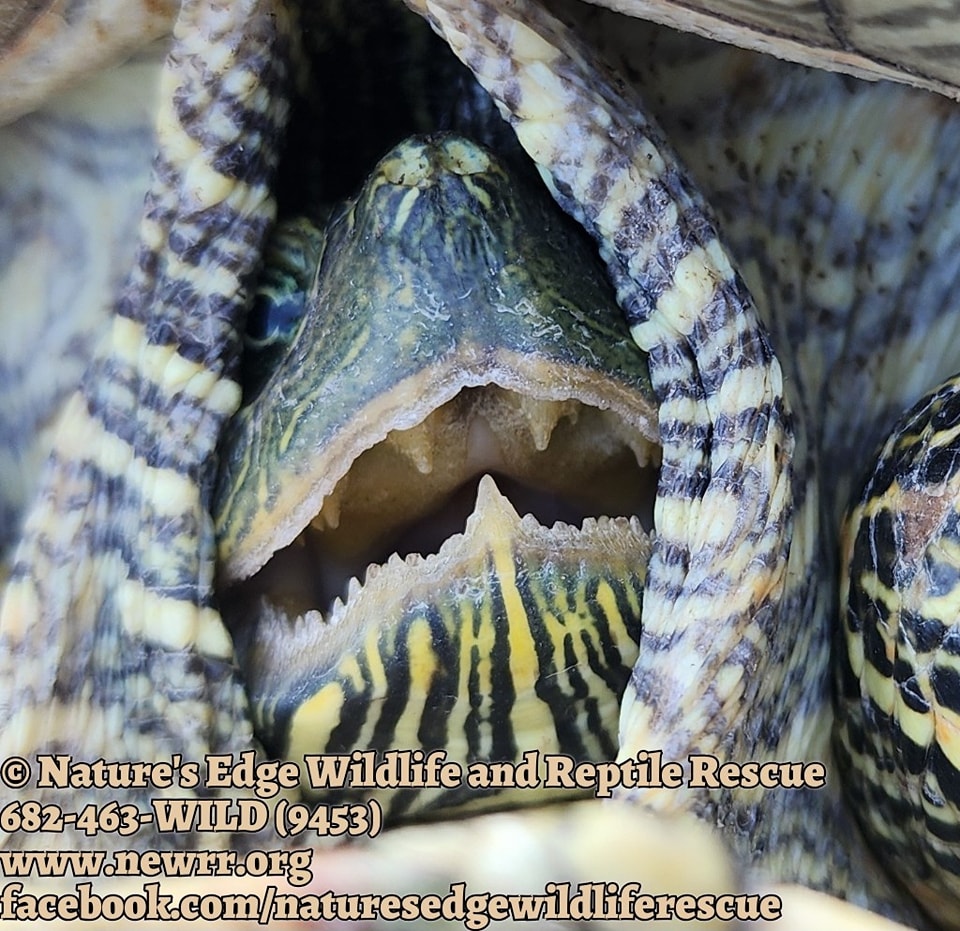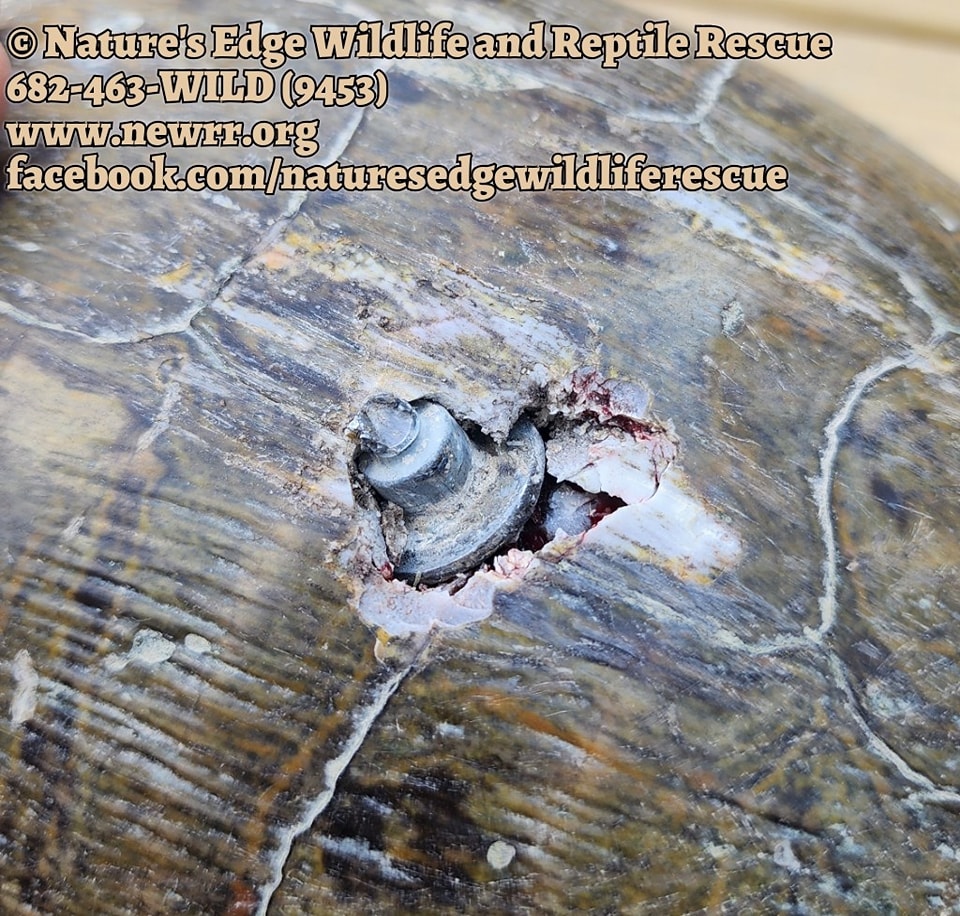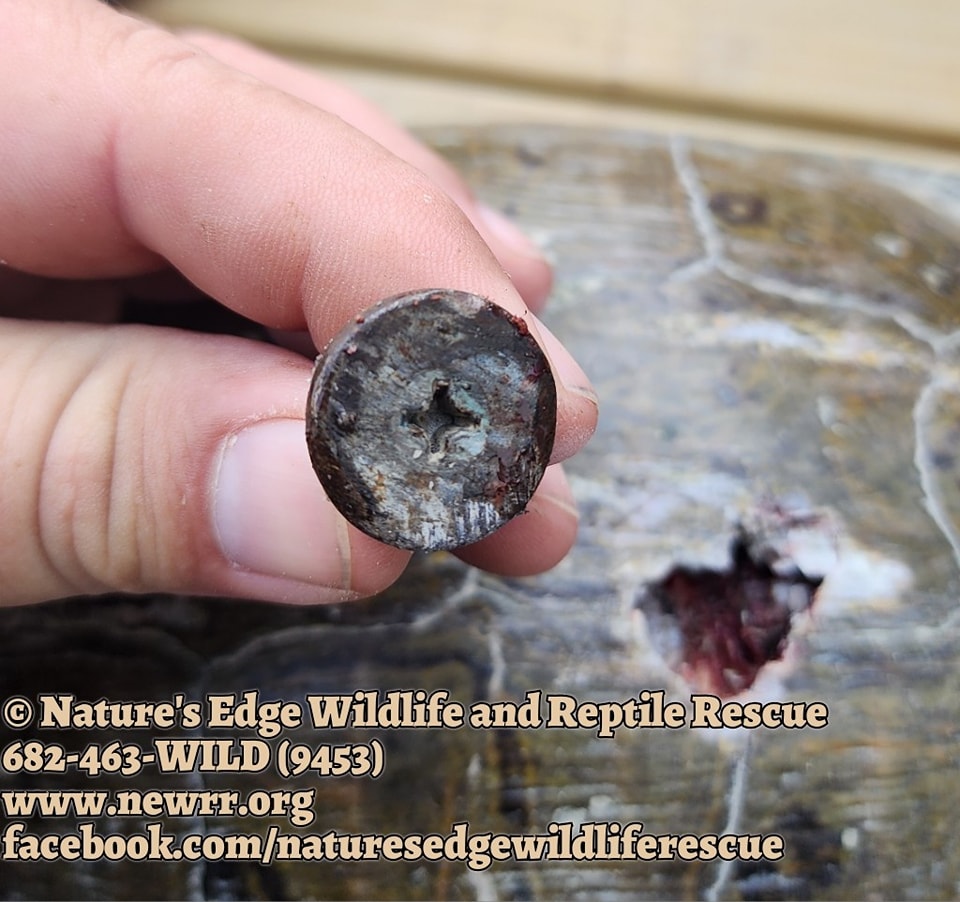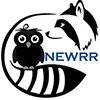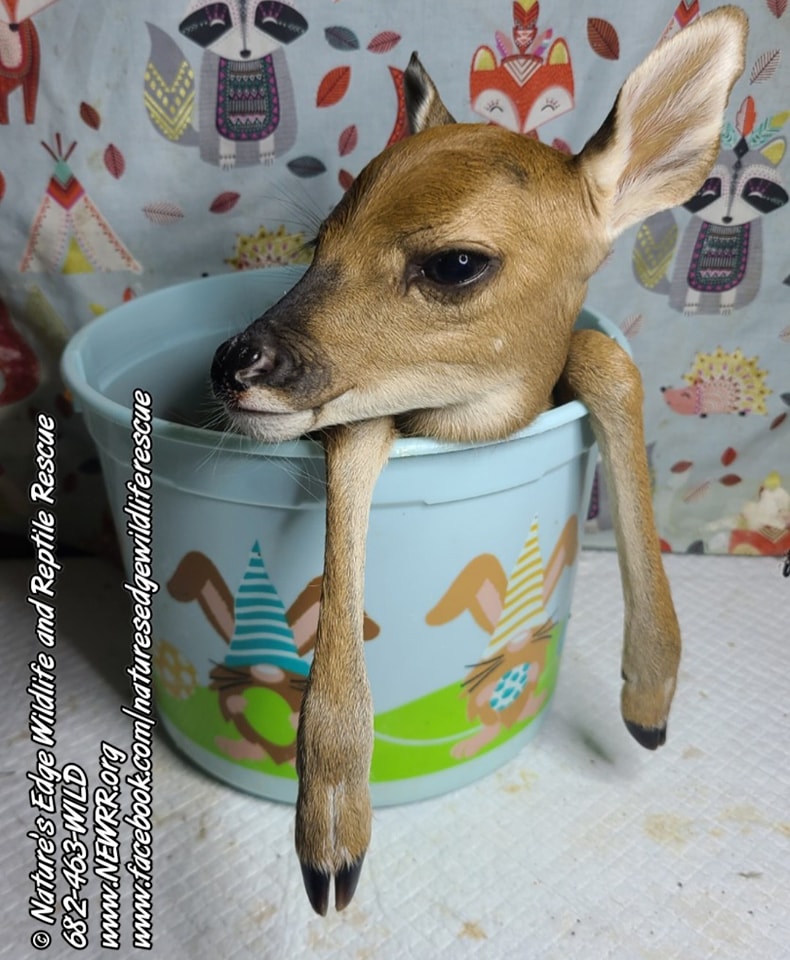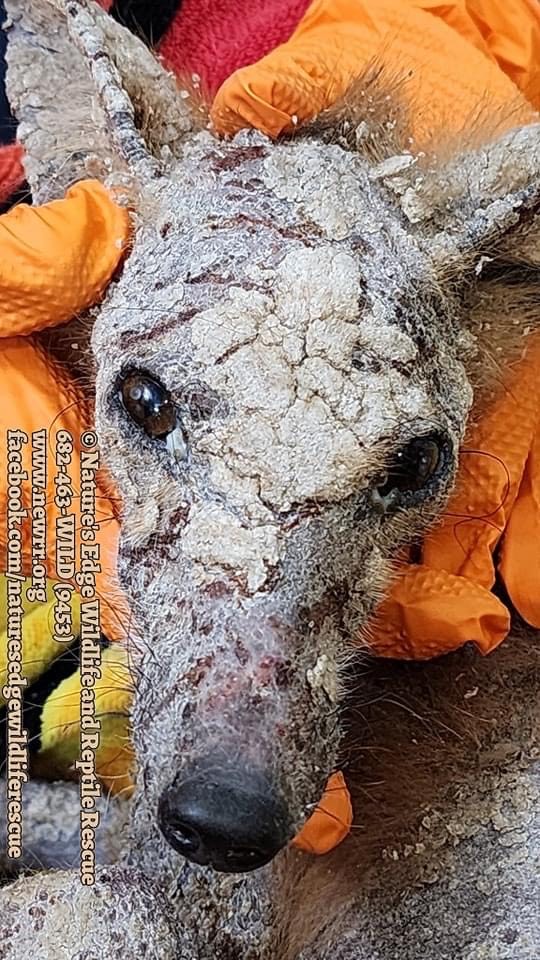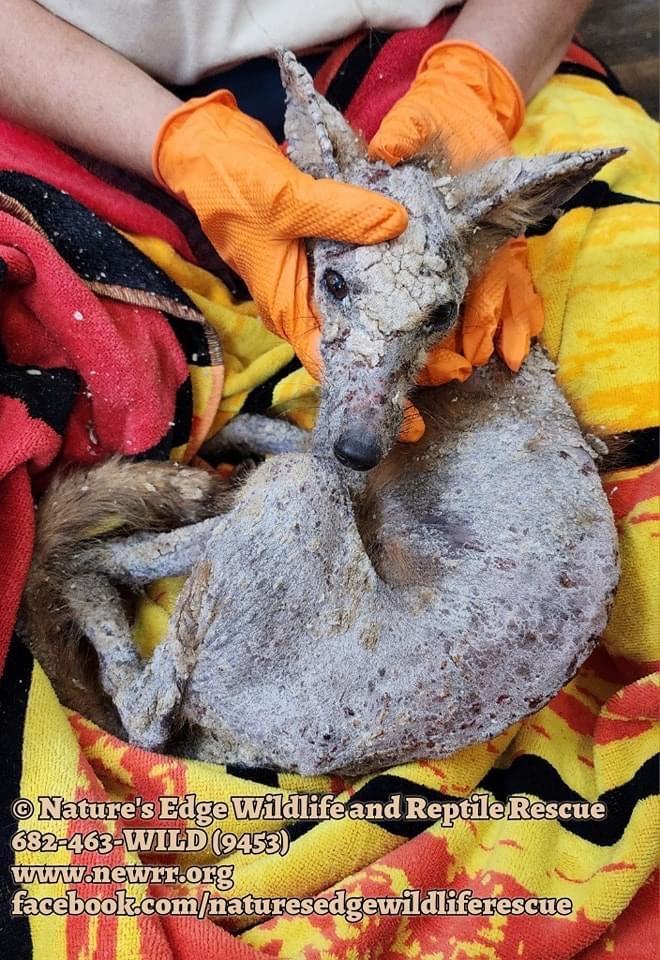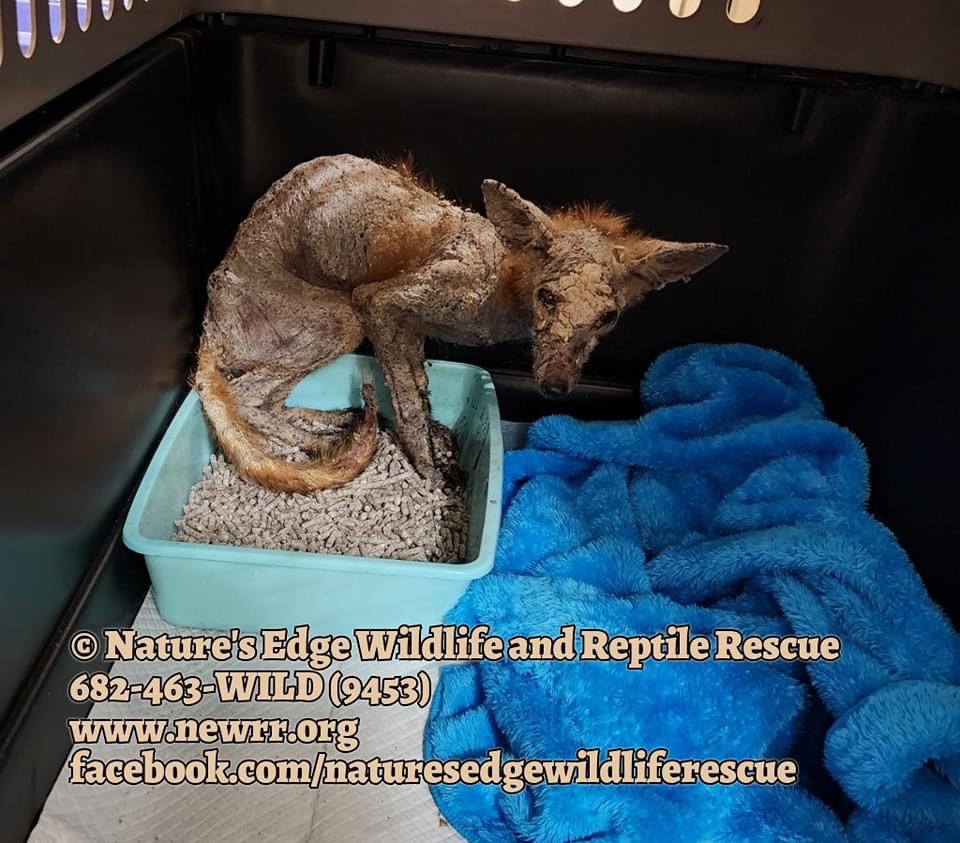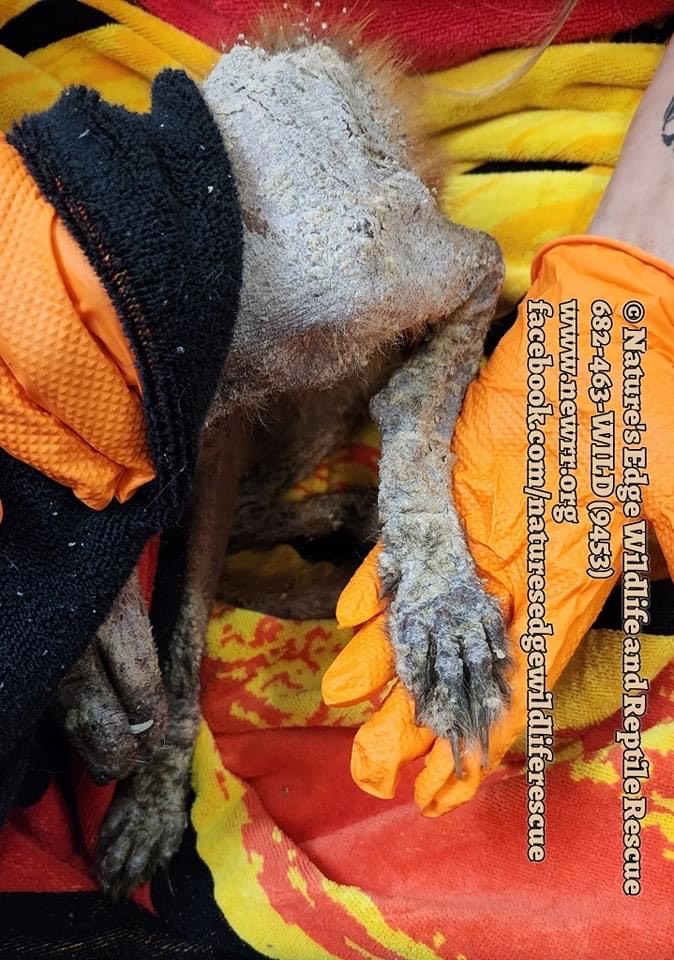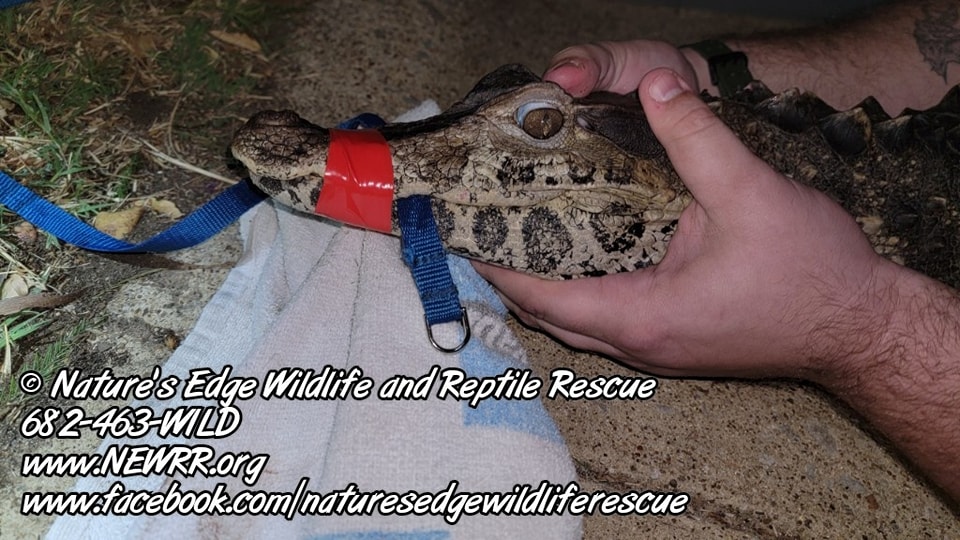It’s baby season for all kinds of animals and turtles are out trying to lay their eggs. We get at least 5 calls per day about turtles right now. If you do see one in the road, please stop and move it out of the road in the direction it is going.
Do NOT try and straddle it in hopes of missing it. Some are taller than you realize. Luckily for this girl, the finders found her after this happened. That is a bumper/body bolt from the underside of a car! On their way to us, this river cooter dropped an egg! So for now, we have her in a tub of dirt hoping she will lay the rest and not become egg-bound. Eggs will be incubated and babies released to the wild.
Oh and that hole, it’s not fixable. We have to keep it clean and hope it granulates over enough to protect the delicate tissue underneath.
Brandi and Mario
Thank you, as always, to our generous donors. We could not accomplish what we do without your support. If you’re interested in contributing to Nature’s Edge, here are some ways you can help:
Linktree https://linktr.ee/NEWRR
